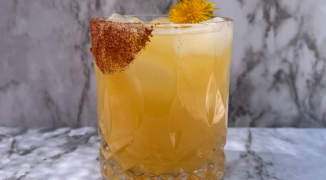Ever since farmers and merchants first hitched up their ponies outside saloons and taverns, strutting in with spurs jangling, few entities have been more crucial to the growth of American communities than local watering holes. From grain growers haggling prices over pints of beer, to cattle hands swapping news while knocking back shots of whiskey, bars have long been critical hubs for talking shop and building relationships, with alcohol pulling double duty as both an impetus for gathering and (most importantly) a conversational lubricant.
As metropolitan areas sprouted from the fabric of these scattershot hamlets, bars quickly became social anchors for helping neighborhoods retain a sense of intimacy as cities’ populations mushroomed.
“I used to travel around America a lot, and wherever I went it seemed that bars were important historic markers,” writes author Christine Sismodo, author of the book, America Walks into a Bar. “The American Revolution, Whisky Rebellion and Stonewall riots all came out of bars. Plus, I’ve worked in a neighborhood bar, so its function as a community center became clear to me. Bars have always been where people share news and discuss it.”
Often, bars are where the first seeds of change, resurgence and new life are sewn. In the months following Hurricane Katrina, neighborhood bars became irreplaceable gathering spots as people slowly found their way back to the city, banding together over the comradery of cold beers and longed-for companionship during the long, bleak stretches of fall and winter.
“Alcohol [has been]…actually considered a panacea,” writes Sismodo. “[It’s] what you drank if you were sick or didn’t have bread.”
New Orleans Advocate restaurant critic Ian McNulty recalled this phenomenon, describing the Banks Street Bar as looking, “like an oasis, and one as improbable as a mirage” when he stumbled upon it in 2005.
“[Neighborhood bars] were trading posts…exchanging information in a city starved for it,” McNulty writes. “There was no Twitter in 2005. Facebook was still just for college kids. But the neighborhood bar provided face-to-face crowdsourcing for what was happening, what people were hearing and what was in the works.”
In the aftermath of the storm’s catastrophe, neighborhood bars from Treme to the Riverbend served as both sounding board and landing spot for community members to gather for purposes both practical and emotional.
Without a doubt, the importance of established neighborhood bars was critical in 2005, and has been solidified over the past decade since the storm. Simultaneously, new bars have steadily become nexuses around which entire blocks, streets and neighborhoods have been reborn. If older bars helped people begin to pick up the pieces, new bars helped to begin assembling them together again.
Ask almost any drink connoisseur in the city, and they’ll quickly tell you that almost no bar has distinguished itself as a role model for how to catalyze a New Orleans neighborhood more than Cure. Established in 2009 on Freret Street, the 1905 fire station renovated by partners Neal Bodenheimer and Kirk Estopinal was largely a destination location than when the bar first threw back its doors.
“It was essentially a ghost town on this street,” said Bodenheimer. “There really weren’t that many businesses when we first opened.”
Cure served as a new kind of model for the neighborhood bar, one that was not only firmly rooted in the history of its community, but served top flight cocktails the likes of which were still rare across the city at the time.
“In New Orleans, a classic, complex cocktail like the Sazerac never went out of fashion, even if today many aren’t made that well,” Times-Picayune writer Todd Price noted in an April 2009 article on Cure’s role in the city’s—then still fledgling—cocktail renaissance. “The city’s bars…have been slow to accept that the ingredients for a drink should be carefully measured and match the quality of those used in the kitchen.”
Six years later, the thought that a business serving craft cocktails wouldn’t measure ingredients or use fresh product seems downright alien. Cure became a launching pad for a family tree of bars and bartenders across the city who gravitated towards the kind of drinks that would soon ensure that housemade bitters and vermouths were par for the course. The space proved that high quality drinks and first rate service didn’t mean sacrificing a sense of neighborhood, but rather, that such thoughtful practices can deepened those relationships.
Cure’s role in New Orleans’ cocktail crescendo helped to change the drinks scene citywide, but their more localized role on Freret Street was every bit as important (if not more so). The bar worked to jumpstart an era of new energy on its main drag that’s still palpable today. The once quiet corridor is now bustling with businesses (from burger joints and coffee shops, to music venues with glowing marquees), maintaining a momentum that at times has seemed to be a whirlwind.
While the bar continues to stretch its arms forward into new territory, one foot remains steadfastly planted in past. No spot is this genuflect more apparent than the museum-like cases which line Cure’s entrance, hat tipping to both the history of the bar itself, its staff and the neighborhood.
There’s a 1938 “Guide to Freret Street” gifted to Cure by a friend of Bodenhiemer’s parents when the bar opened, which points to another time the stretch of road was a critical thoroughfare. (In the guide, a restaurant called The Slogan advertises that they not only have delicious oyster loaves, but “well-seasoned, fat Lake Pontchartrain hard shell crabs.”) There are bottled cocktails from the 1920s and vessels shaped like Carmen Miranda that were pulled from the collection of Estopinal’s grandfather. Of course, the smooth, anise bite of Ojen has a prominent place, and a wide collection of rare grappa and eau de vie speaks to Bodenhiemer’s personal passion.
For Cure, each bottle, cocktail guide or gift in the case has a story. A number of the bottles are exceedingly rare one-off creations or misprints, acquired through trades and swaps with other bartenders across the country. Many of the items, though, that find their way into the case are from community members. Regular guests often go out of their way to bring back gifts to the bar from their travels or share bottles from their family’s collection. These presents become a tangible connection to a place that holds—for a large swath of people—true emotional significance.
The necessity of bars in the building of a nation (looking at you, America), a city like New Orleans or a street like Freret paint a portrait of their cultural impact long past simply being a space to imbibe. Only looking at a bar’s place in the larger cultural context with this kind of bird’s eye view, however, fails to notice the heartbeat of what makes a bar great day after day (and year after year): its people.
The personal histories and individual stories behind neighborhood bars and the guests who love them carry a kind of emotional weight and importance that can’t be matched. Whether you’re a frequent visitor who revels in testing out bartenders’ latest creations, or remember the moment your now-husband dropped to one knee in the courtyard, regulars at Cure feel a sense of connection to the bar because it’s a pivotal place in their memories. At their best, bars are living, breathing organisms that become interwoven into the fabric of a person’s life.
This singularly intimate—almost familial—commitment to providing a space where lives can truly be lived out loud ensures that bars like Cure will continue to thrive as a nucleus around which individuals and communities grow, change and develop long into the future.
Photo courtesy of Hunter Holder.





